Rome is undoubtedly one of the most touristed cities in the world with fascinating buildings, beautiful museums, nice neighborhoods, and pieces of history and art. You’d be rather surprised that not every inch of the Eternal City has been discovered and conquered by tourists and if you know where to look hidden gems are surprisingly easy to find even in Rome! Today we want to take you to one of these hidden gems: the Galleria Doria Pamphilj, a quiet Museum far from the beaten track and the crowd of tourists, housed in a majestic Palazzo (Palace) still owned by the aristocratic Pamphilj family, which collected artworks.
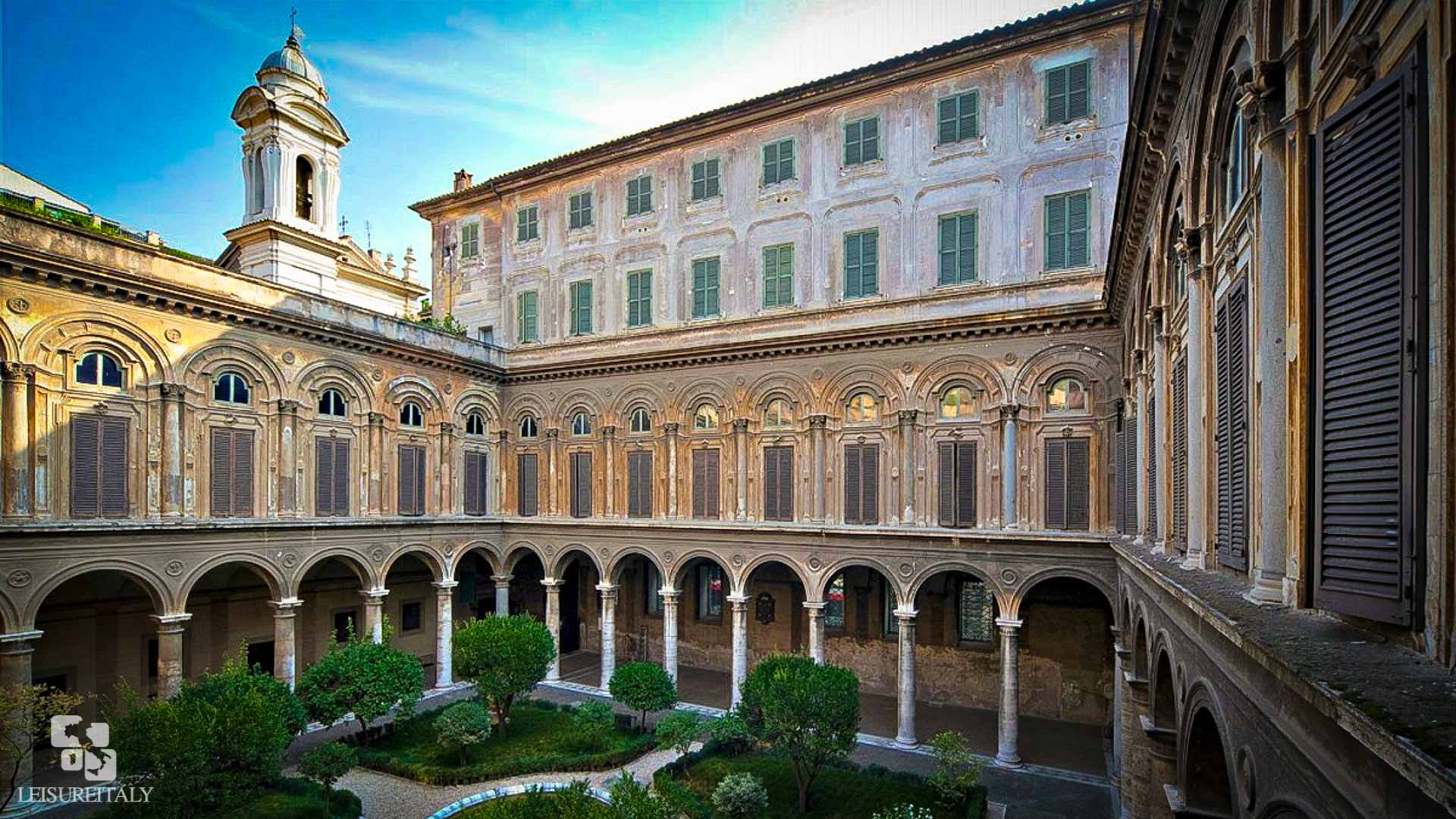
Despite its position corresponding to the center of Rome, Via del Corso, the Gallery is still unknown to the most.Its impressive rooms and the opulent hallways of the Galleria are hung with floor-to-ceiling paintings and embellished by antique furniture, porcelain pieces, crystal chandeliers, more than four hundred artworks, ancient Roman statues, and frescoed ceilings. Walking through the Galleria is like stepping back to the 17th Century because those were the private rooms and hallways used by old noble Roman families: Della Rovere first, Aldobrandini after and finally, Doria Pamphilj.
Additionally, within the Gallery, we can admire two incredible marble busts of Pope Innocent X, sculptured by the most important artist of the Italian Baroque, Gian Lorenzo Bernini. The first of them shows a terrible natural fracture of the marble crossing the chin of the Pope that emerged while the sculptor was finishing it. So the genial Bernini created the second one in just one week.
But the Portrait of the implacable Pope Innocent X, painted by the Spanish artist Diego Velasquez between 1649 and 1650, is the undisputed star of the Galleria Doria Pamphilj. Usually, when we go to a museum or art gallery housing paintings, we stand, even for long minutes, in front of a portrait which captures our attention, in order to understand the personality of the person who is represented. We slowly recline our head to the right and to the left to penetrate his eyes. We patiently observe his posture and every single wrinkle, imperfection and whim of his face to capture the joys and pains of his life and the essence of his nature.
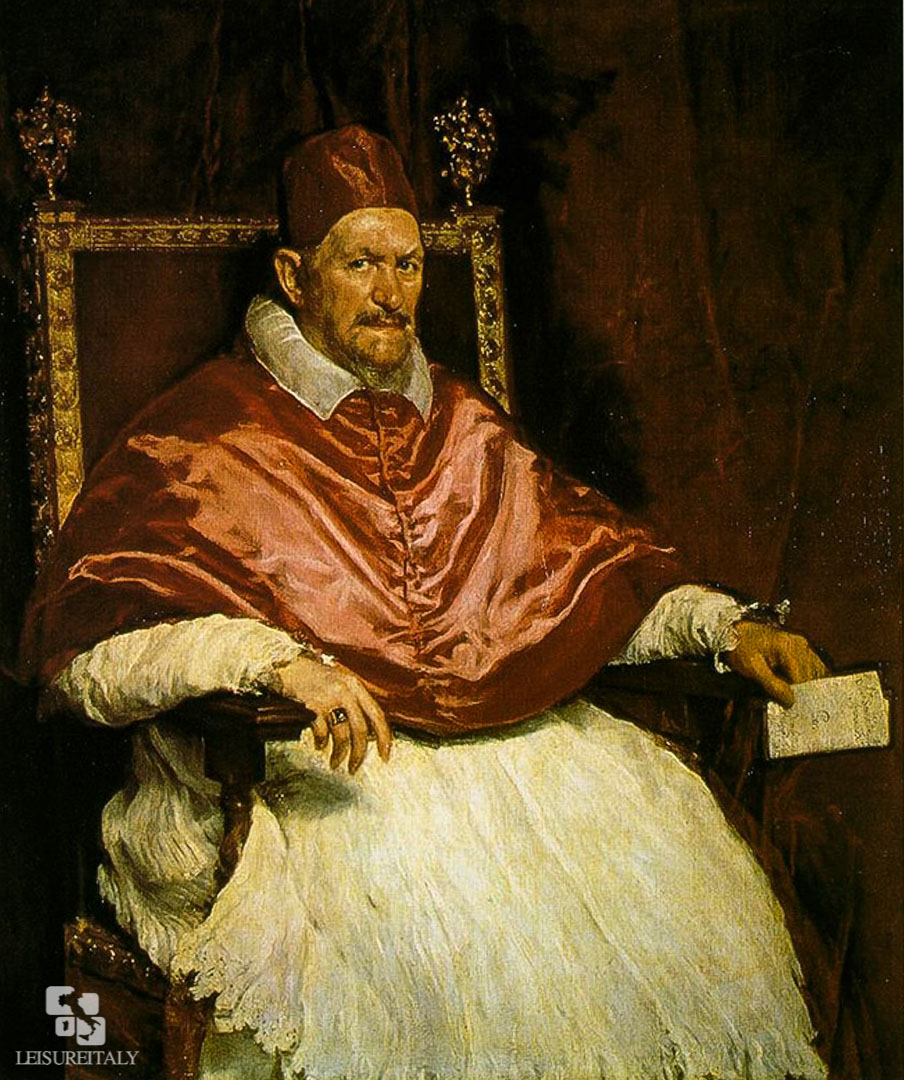
Well, what above said is totally overturned when we face the portrait of Pope Innocent X. Have you ever been observed by a portrait? We know that this is a very unusual question. It might not even make sense. But everything becomes pretty clear when facing this painting considered one of the masterpieces of the world portraiture history.
The emotional power of the work is so large to annihilate even the most audacious of observers. Seated on his throne the Pontiff appears to be conscious of his immense power. He controls and dominates everything and everyone. His severe and fearless look is incorruptible. It’s him to scrutinize our Ego and not vice versa.
Actually, Pope Innocent X was not such an easy person; and Diego Velasquez portrays the features of the louring Pamphilj Pontiff without any softening or idealization. Hence the legend that, when he saw the portrait, the Pope exclaimed: “It’s too true!”.
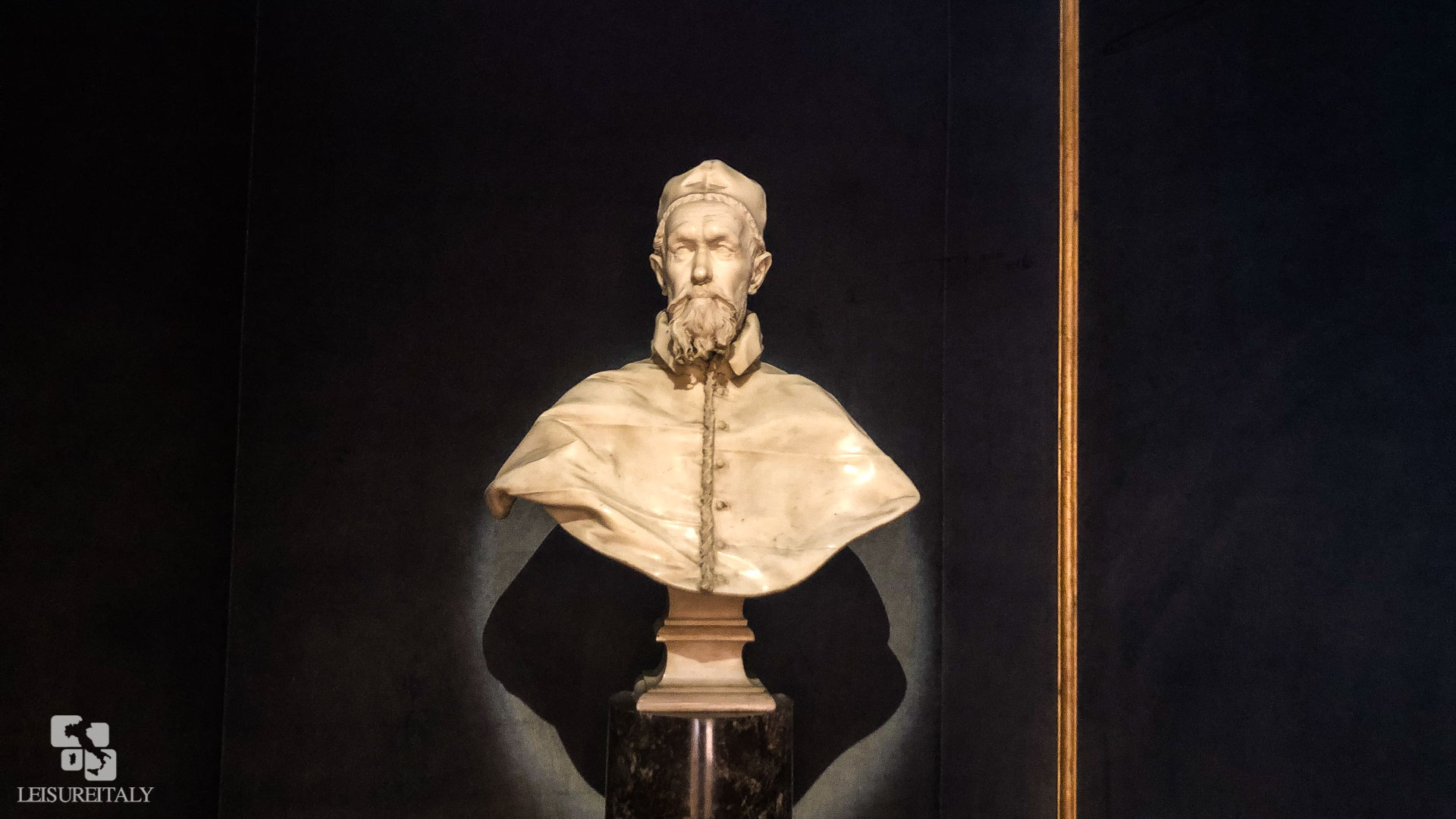
We also suggest to not miss these other Masterpieces:
- Tiziano: Salomè con la testa del Battista (Salomè with the Head of John the Baptist). The severed head is probably Tiziano’s self-portrait and Salome a lover who spurned the artist.
- Two early Caravaggios: Riposo durante la fuga in Egitto (Rest during the flight into Egypt) and Maddalena Penitente (Penitent Magdalen). The doubts about the paternity of the Penitent Magdalene have been canceled by a comparison between the two works showing the identic position of the Magdalene and the one of the Virgin Mary.
- Jusepe de Ribeira: Saint Jerome
- Guido Reni: Lotta dei Putti (The Fighting Putti). It represents the eternal fight between the upper and the lower classes
- Pieter Bruegel the Elder: Battaglia nel porto di Napoli (Battle in the Bay of Naples). The geographical representation of the Bay of Naples and above all the colors used by the artist (f.e. the green instead of the intense blue color of the sea of Naples) reveal that Pieter Bruegel the Elder has never been to Naples.
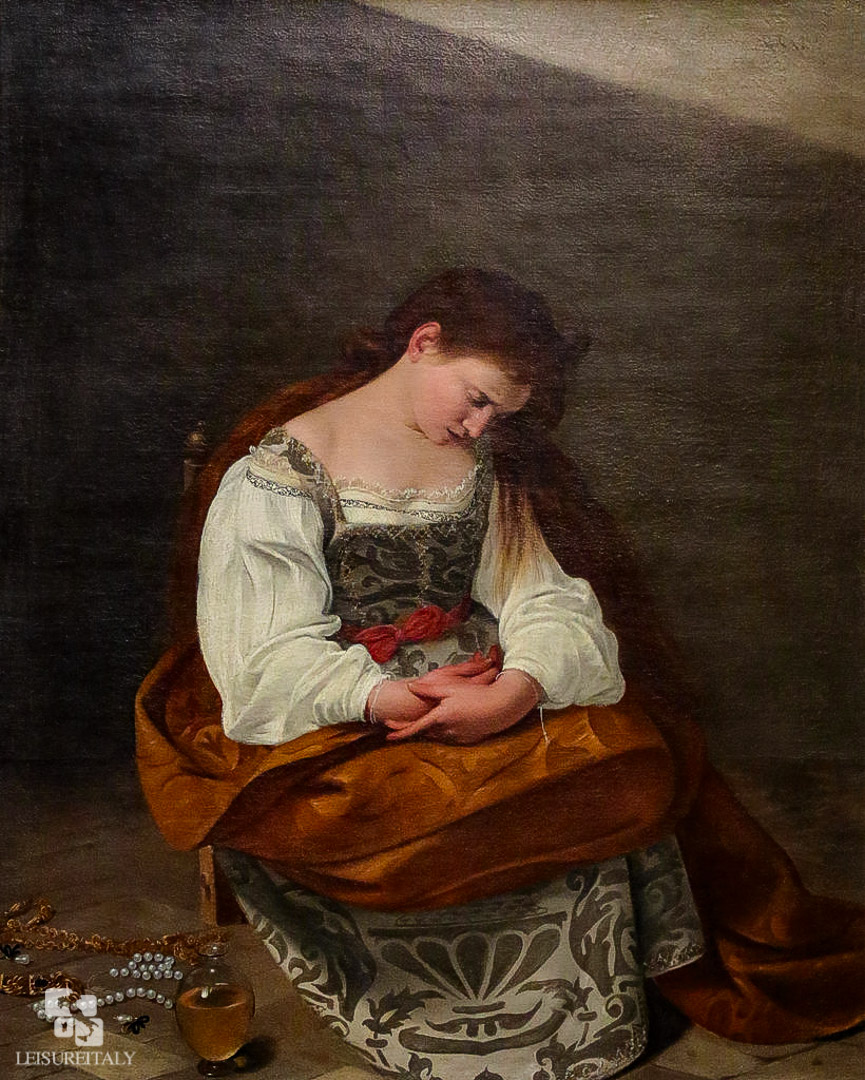
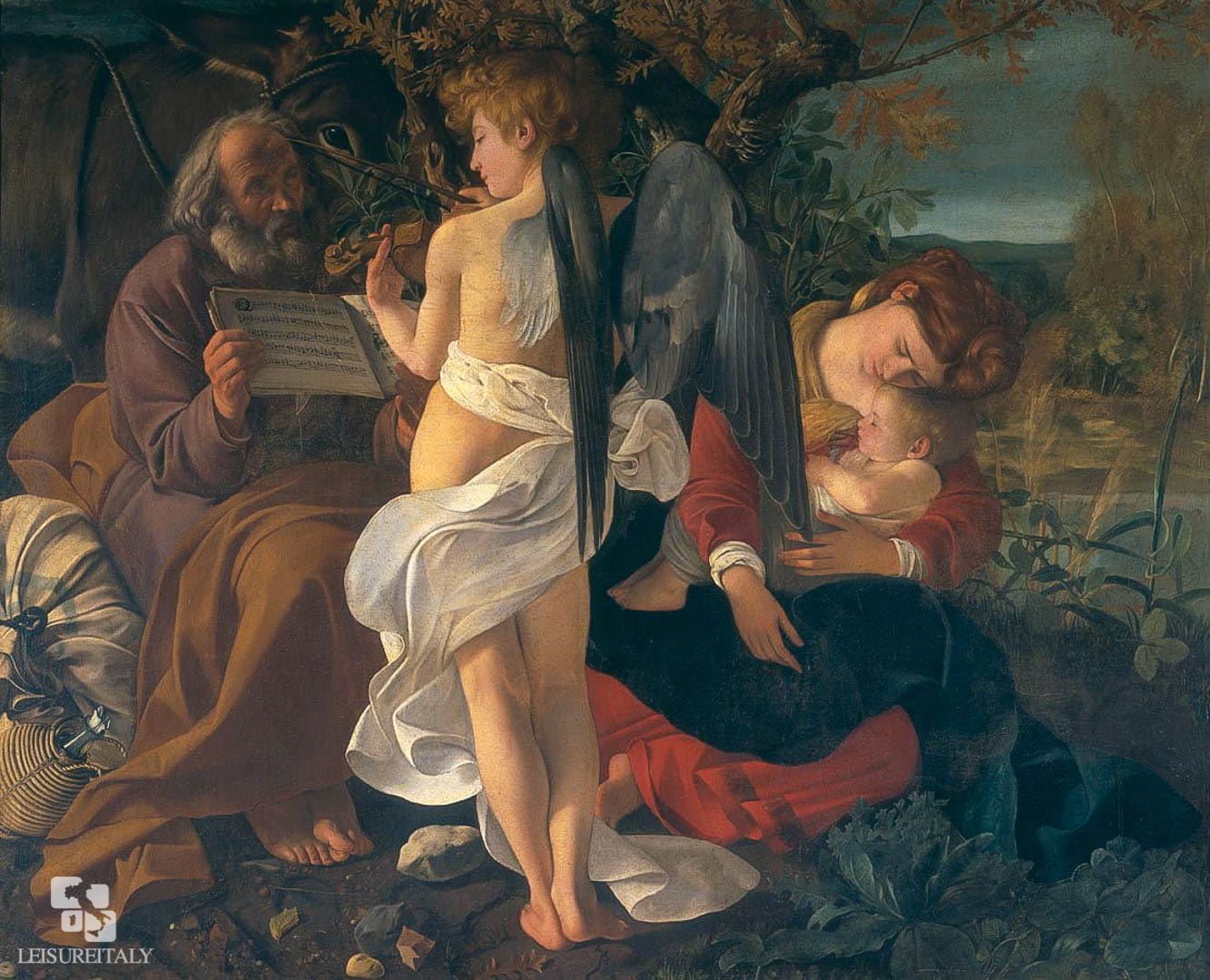
To sum up, the Galleria Doria Pamphilj is absolutely dazzling and marvelous! Whether you want to tour the impressive art gallery (so incredibly uncrowded compared to the more famous museums in Rome) or the majestic apartments we suggest you to add the Palazzo Doria Pamphilj to your list of the hidden gems of Rome!
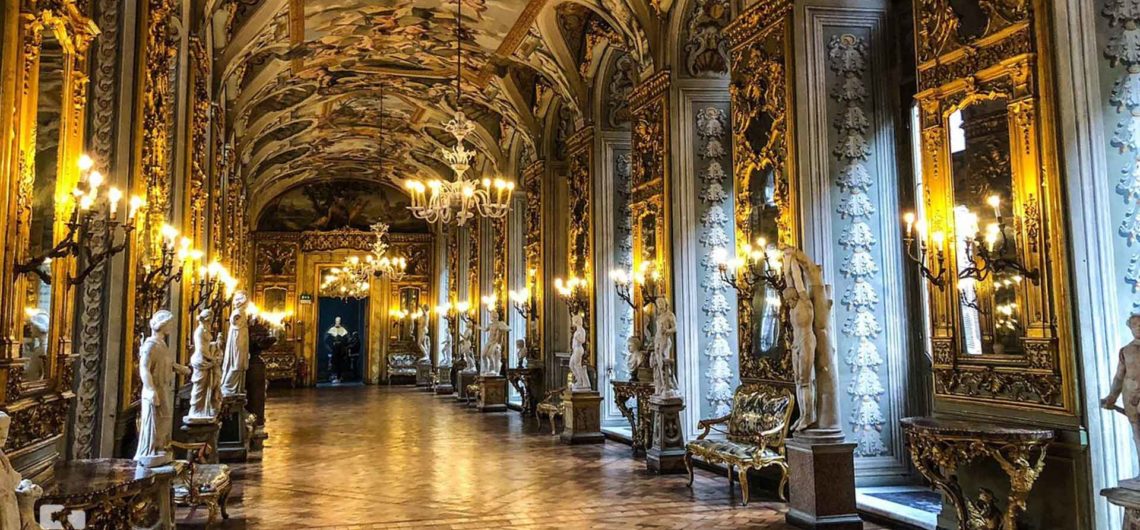
Comments